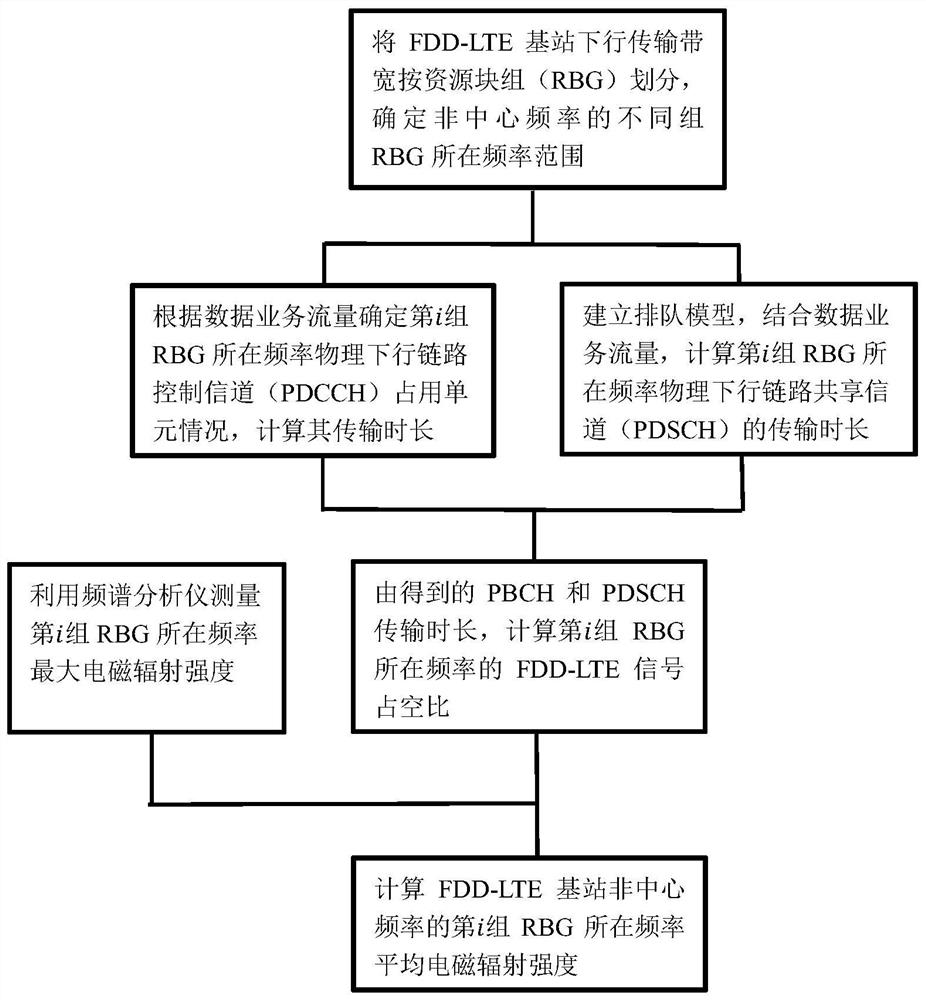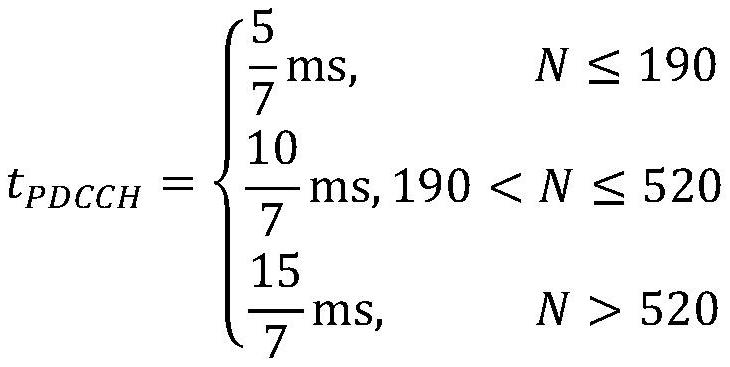A prediction method of non-center frequency electromagnetic radiation of fdd-lte base station
A prediction method and electromagnetic radiation technology, applied in electrical components, digital transmission systems, data exchange networks, etc., can solve problems that cannot be used to predict the average electromagnetic radiation intensity of non-center frequencies of FDD-LTE base stations
- Summary
- Abstract
- Description
- Claims
- Application Information
AI Technical Summary
Problems solved by technology
Method used
Image
Examples
Embodiment Construction
[0032] The present invention will be further described below in conjunction with the accompanying drawings and embodiments.
[0033] The implementation object of the present invention is an FDD-LTE base station, the downlink bandwidth is 20MHz (1840MHz-1860MHz), wherein the downlink transmission bandwidth is 18MHz (1841MHz-1859MHz), and the center frequency of the downlink transmission bandwidth is 1850MHz. The measurement equipment uses a portable spectrum analyzer (KEYSIGHT N9918A, the maximum measurement frequency is 26.5GHz) and a logarithmic periodic antenna (HyperLOG 60180, the measurement frequency range is 680MHz-18GHz). The antenna factor AF of the receiving antenna at 1.8GHz is 30dB / m, The cable loss is 3dB. The flow chart of the present invention is as figure 1 shown.
[0034] A kind of FDD-LTE base station non-center frequency electromagnetic radiation prediction method of the present invention comprises the following steps:
[0035] 1) There are physical downli...
PUM
 Login to View More
Login to View More Abstract
Description
Claims
Application Information
 Login to View More
Login to View More - R&D Engineer
- R&D Manager
- IP Professional
- Industry Leading Data Capabilities
- Powerful AI technology
- Patent DNA Extraction
Browse by: Latest US Patents, China's latest patents, Technical Efficacy Thesaurus, Application Domain, Technology Topic, Popular Technical Reports.
© 2024 PatSnap. All rights reserved.Legal|Privacy policy|Modern Slavery Act Transparency Statement|Sitemap|About US| Contact US: help@patsnap.com










